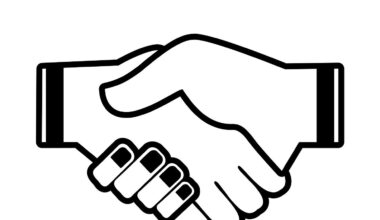Designing Tiered Loyalty Programs to Encourage Customer Engagement
In today’s competitive market, businesses are increasingly recognizing the importance of brand loyalty as a driving force behind their success. One effective way to build brand loyalty is through the implementation of tiered loyalty programs. Such programs incentivize customers to engage more deeply with the brand, fostering an emotional connection and encouraging repeat purchases. A well-structured loyalty program not only rewards customers for their purchases, but also incentivizes them to explore more products and services within the brand’s offering. This approach leads to increased customer lifetime value and enhanced customer retention. The layers of tiers in these programs create a sense of achievement and belonging, motivating customers to ascend to higher levels. As customers accumulate points or rewards, they feel more invested in the brand and are likely to spread positive word-of-mouth, which can significantly enhance brand visibility. To design an effective tiered loyalty program, businesses must conduct extensive market research, understand customer needs, and tailor rewards to maximize engagement. This ensures that the program resonates with target audiences, enhancing the overall success of the loyalty strategy.
One critical component of a tiered loyalty program is the structure and criteria for advancing through the tiers. Businesses need to determine specific milestones that customers must reach to enjoy better rewards. These milestones can be based on various factors such as purchase frequency, total spending, or engagement activities such as referrals and feedback submission. Moreover, the benefits associated with each level should become increasingly attractive to motivate customers effectively. Potential rewards may include exclusive discounts, free shipping, special members-only events, and early access to new products. It is essential to communicate these benefits clearly to customers so they can see the value of progressing through the tiers. Additionally, businesses should ensure that the progress towards tier advancement is easily trackable by customers. This not only helps to keep them engaged but also encourages them to participate actively in the loyalty program. Integrating technology, such as a mobile app or website dashboard, can streamline this process for customers. By capitalizing on the digital experience, brands can enhance the perception of value associated with their loyalty programs significantly.
Another important aspect of designing tiered loyalty programs is personalization. Customers today expect personalized experiences that cater to their unique preferences and behaviors. By leveraging data analytics, businesses can gain insights into customer purchasing patterns, preferences, and interactions with the brand. This information can be used to create tailored rewards that resonate with customers on an individual level. For instance, a customer who frequently purchases skincare products may appreciate exclusive access to a new skincare line, while another may prefer travel-related rewards if they are a frequent traveler. Personalizing rewards accordingly can increase overall satisfaction and deepen customer relationships with the brand. Moreover, incorporating customer feedback into the loyalty program design can help brands refine their offerings continuously. Surveys and feedback forms can provide valuable insights into customer desires and expectations. By actively listening to customers, businesses can create a dynamic loyalty program that evolves with their audience, thereby ensuring its long-term effectiveness in building brand loyalty and customer engagement.
Technology and Automation in Loyalty Programs
Technology plays a crucial role in implementing efficient tiered loyalty programs. Automated systems enable businesses to manage customer memberships seamlessly, track points, and manage rewards effortlessly. Employing customer relationship management (CRM) systems can help in segmenting loyalty program members based on their behavior and preferences. This segmentation allows businesses to communicate more effectively with different customer groups, ensuring the delivery of relevant rewards and promotions. Moreover, digital platforms provide an avenue for customers to access their loyalty account, view points accumulated, and explore available rewards in real-time. Utilizing mobile apps can further enhance the customer experience by providing instant notifications about new offers, promotions, or tier advancements. This immediacy creates a sense of excitement and urgency, encouraging customers to engage with the brand more frequently. On top of that, leveraging social media platforms for loyalty engagement can broaden the effectiveness of the program. Brands can create campaigns allowing customers to share their experiences, boosting word-of-mouth and driving new customer acquisition as people are more likely to trust recommendations from friends and family.
Aside from loyalty points or rewards, tiered programs can offer unique experiences that elevate customer engagement. These experiences can include exclusive access to events, personalized services, or early access to product launches. Creating memorable experiences for high-tier members can foster a deeper emotional connection and significantly enhance customer loyalty. For instance, brands can organize special events such as exclusive shopping nights or private previews for loyal customers. These experiential rewards can create a sense of community among customers, making them feel valued and appreciated. Moreover, allowing high-tier members to provide feedback or influence future offerings can reinforce their loyalty further. The more invested customers feel in the brand and its products, the more likely they are to continue their relationship with the brand. Furthermore, brands should consider implementing a gamification aspect within their loyalty programs. Incorporating game-like elements, such as challenges and leaderboards, can increase engagement by tapping into customers’ competitive nature. This approach encourages customers to participate actively, driving continued interactions and reinforcing their loyalty.
For a tiered loyalty program to reach its full potential, clear communication is essential. Customers should have a comprehensive understanding of how the program works, what they need to do to earn rewards, and the benefits they can enjoy at each tier. Educational resources, such as guides and FAQs, can be valuable tools for onboarding customers and ensuring they maximize their participation. Brands should also utilize targeted marketing campaigns to promote specific rewards or tier advancements, further encouraging the desired behaviors. Regular communication through emails or app notifications helps to keep customers informed about their points balance, upcoming promotions, and other relevant updates. Additionally, businesses should celebrate customers’ milestones, such as tier upgrades, with personalized congratulations and rewards. This recognition reinforces positive behaviors and encourages others to strive for advancement within the loyalty program. By fostering a culture of communication and transparency, brands can establish trust with their customers, resulting in long-lasting relationships. Moreover, manufacturers should acknowledge customer achievements and solicit feedback on their loyalty experiences to further enhance the program’s effectiveness.
Measuring Success and Continuous Improvement
Finally, assessing the effectiveness of a tiered loyalty program is vital for its ongoing success. Brands should establish key performance indicators (KPIs) that reflect their goals and objectives for the program. These KPIs may include metrics such as customer retention rates, redemption rates, and engagement levels. Using data analytics, brands can monitor these KPIs to evaluate the impact of their loyalty initiative. Regular analysis will enable businesses to identify trends, successful tactics, and areas for improvement. This data-driven approach guides strategy adjustments and enhances the program’s relevance in an ever-evolving market. Moreover, engaging with customers through ongoing feedback mechanisms can provide valuable insights that will help shape future improvements. Consider conducting surveys at various touchpoints in the customer journey to capture opinions on the loyalty program and reward offerings, ensuring they align with customer expectations. Continuous improvement is crucial in maintaining customer interest and engagement. By being responsive and adaptable, businesses can foster brand loyalty over time while ensuring their programs remain competitive and attractive in the marketplace.
In conclusion, designing effective tiered loyalty programs encompasses various elements such as tier structure, personalization, technology, communication, and assessment. By focusing on these aspects, brands can create strong emotional connections with customers, leading to increased engagement and loyalty. The journey begins with understanding customer needs and preferences, allowing businesses to develop tailored experiences that resonate. Furthermore, utilizing technology and automated systems enhances the program’s effectiveness, making it easier for customers to track their rewards and stay engaged. As brands continuously measure their success and remain receptive to customer feedback, they position themselves favorably for long-term loyalty. Experiences, recognition, and a sense of community are all vital in encouraging customer participation and commitment. Investing in well-designed tiered loyalty programs not only boosts brand loyalty but also drives customer lifetime value. In today’s marketplace, retaining customers through meaningful engagement is paramount, setting brands apart from the competition. Achieving successful loyalty programs ultimately hinges on understanding customers, delivering value, and fostering genuine relationships. By implementing these strategies, brands can cultivate lasting loyalty and achieve significant business growth through dedicated customer engagement.


